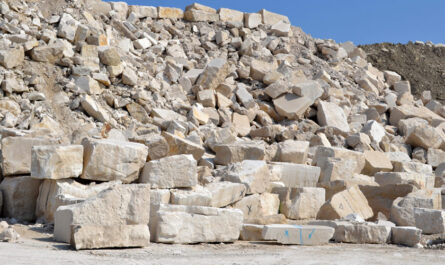Thermal insulation materials play an important role in controlling heat transfer and energy conservation. With growing concerns around energy efficiency and reducing carbon footprint, the demand for high performance insulation materials is increasing across industries.
What are Thermal Insulation Materials?
Thermal insulation materials are designed to reduce the rate of heat transfer (i.e., transmission of heat) between objects or spaces of different temperatures. They help minimize energy losses and regulate indoor temperatures by preventing the entry and escape of heat. Most common Thermal Insulation Materials work by trapping small pockets of air which are relatively poor conductors of heat. The choice of insulation depends on the application and required thermal resistance. Let’s explore some of the most widely used Thermal Insulation materials today.
Glass Wool and Fiberglass Insulation
Made from glass fibers, glass wool and fiberglass insulation offer excellent thermal resistance for buildings. When glass fibers are blown or drawn into fine filaments during manufacturing, they form a lofty batt or loose-fill material ideal for walls and attics. Air pockets become trapped within this mesh-like fiber structure slowing heat flow. Glass wool has insulation values generally between R-3 to R-4 per inch and works well in both residential and commercial construction. Its fire resistance and moisture resistance also make it a top choice among builders.
Rock Wool Insulation
Similar to glass wool in composition but using basalt or slag instead of glass, rock wool is another popular insulation material. During production, molten rock is spun into fine fibers that lead to a dense yet porous structure. With insulation values around R-2.5 to R-3.5 per inch, rock wool provides durability against moisture, pests and fires. It is commonly applied between framing cavities or as rigid board insulation on exterior walls. Due to its non-combustible fibrous core, rock wool holds an important role in commercial and industrial building insulation.
Cellulose Insulation
Made from recycled paper fibers treated with borate fire retardants, cellulose insulation offers green recycled building material alternatives. Loose-fill cellulose is blown into wall cavities or attic floors covering a wide area quickly with depth. With R-values around R-3 to R-4 per inch, it matches fiberglass insulation performance but at a lower cost. The treated paper fibers absorb very little moisture as well. Cellulose insulation is a sustainable option compatible with both new construction and existing buildings undergoing remodeling.
Spray Polyurethane Foam (SPF)
Delivering some of the highest R-values, spray polyurethane foam (SPF) forms an air sealing and rigid insulation barrier against exterior walls, attics, and floors. During application, liquid chemicals are reacted on-site to expand many times their initial volume into a foaming insulation. SPF insulation can fill all cracks and crevices tightly adhering to surfaces. R-values range between R-6 to R-7.5 per inch for medium-density SPF and over R-7 per inch for closed-cell high-density SPF. It provides an airtight moisture and air barrier with wood framing while boosting energy efficiency.
Mineral Wool Board Insulation
Made from mineral wool fibers such as slag or basalt, mineral wool boards offer dimensionally stable rigid insulation for exterior walls, below grade foundation walls, rim/band joists and metal building panels. With interlocking fibrous structures, mineral wool boards resist moisture degradation and airflow better than fiberglass batt insulation in wet areas. Typical R-values delivered are R-3 to R-6 per inch depending on board thickness used. Mineral wool boards come in pre-cut sizes easy to install between wood or metal studs and joists.
Other Common Insulation Materials
Some other noteworthy insulation materials commonly found in various construction applications include: expanded polystyrene (EPS) or extruded polystyrene (XPS) rigid foam boards, polyisocyanurate (polyiso) insulation panels, perlite or vermiculite loose-fill insulation, and reflective radiant barrier foils (when used in conjunction with an airspace). Each offers unique benefits for thermal, fire, moisture or cost performance depending on project needs. Choosing the right insulation material requires evaluating several factors.
The global thermal insulation materials market size is expanding rapidly driven by strict energy efficiency regulations, consumer awareness on green buildings and industrialization. With energy costs on the rise, thermal insulation plays a vital role in minimizing building heating and cooling loads while enhancing indoor comfort levels. Understanding the properties and applications of common insulation materials discussed here allows for well-informed choices benefiting both new construction projects and existing home energy efficiency upgrades. Let me know if you need any additional details on these important thermal building products.
Note:
1. Source: Coherent Market Insights, Public sources, Desk research.
2. We have leveraged AI tools to mine information and compile it.



